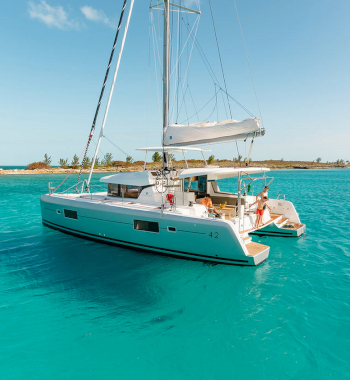Enjoy A Day on Tortola’s History Trail
By Jane Bakewell
Enjoy a full-packed day on the Tortola History Trail covering four important sites with stops for coffee, lunch and ending with a Caribbean rum-infused sunset. After all, destinations with pristine beaches, deep blue to aqua waters and those ever so wonderful swaying palms can be found in many places. However, connecting with a country’s history can deeply enrich your experience of a land and its people.
We are starting our 12-mile-long island tour of historic Tortola at Brandywine Bay on the East End of the island. So, gas up your vehicle, pack some bottled water and a sunhat, and let’s start this intrepid adventure.
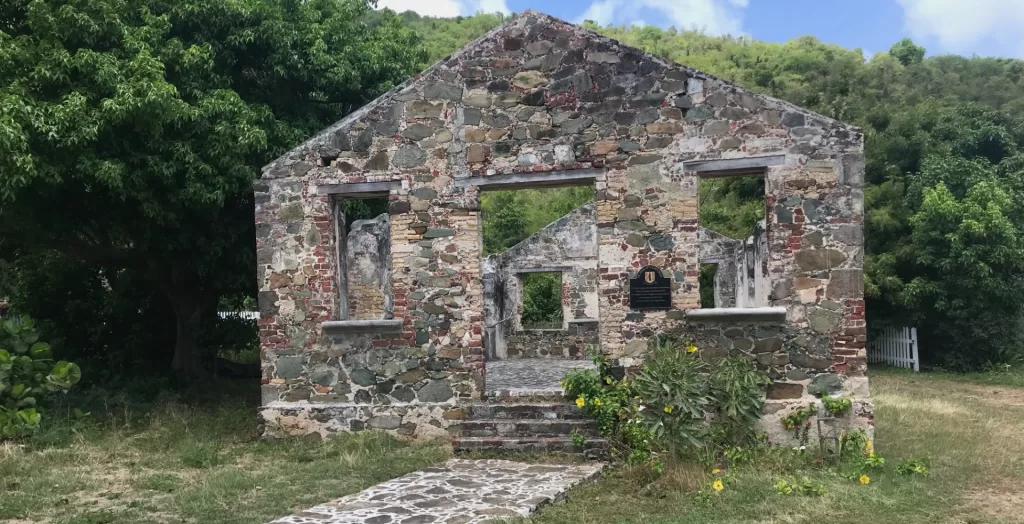
Just across from Brandywine Bay and the prominent Cedar School, nestled behind a low wall, lies the historic Kingstown Church – a stone and coral façade minus a roof. You could easily breeze by this ruin and miss the fascinating history and stories that cry out from these rocks. Thanks to the BVI Anglican church and community preservationists, St. Phillip’s Anglican Church built in 1840, still stands as the oldest “free black church” to survive in the Americas.
What gives this church significance is that it lies in the historic village of Kingstown, established in 1831 as a free settlement for Liberated Africans, who reached the Virgin Islands pre-emancipation. Freed from slave ships in the mid -1800s by the British Navy, these fortunate souls were the beneficiaries of the Abolition Act of 1807, which banned transatlantic slavery.
Imagine a village for former salves, with land to grow food and have a church, which also served as a school – truly a venerable pocket of heavenly freedom in a territory which was not fully emancipated until 1834. As you tour the bare insides of the church with just a stone altar remaining, listen closely as you look out the open windows to the sea and possibly hear a chorus of hymns or soulful gospel chants.
A rich site of cultural and religious history, these grounds are open for civil marriage ceremonies which are designated “open-air ceremonies,” and many have found this a unique wedding destination spot. You may want to pause for a brief photo-op looking from the church window to the shimmering bay beyond.
With “Amazing Grace,” still humming in your ears, time to hop in the jeep and head to Road Town for a late morning latté at Island Roots Café on historic Main Street. Brewing coffee and serving croissants in the once Old Customs House, is how many businesses marry the old with the new. Once the original government port building at a time when the sea lapped up to the back of the building prior to reclamation, this is now a popular morning café.
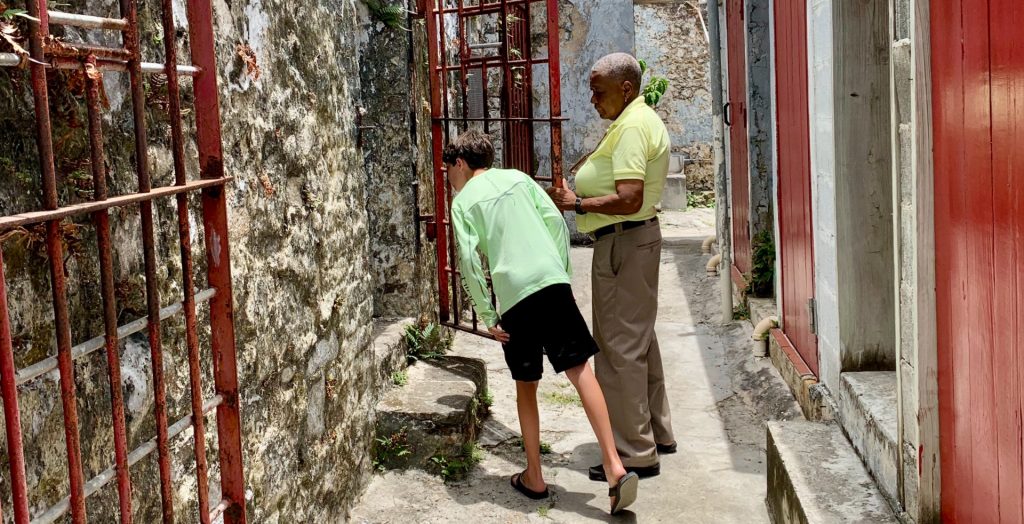
Caffeinated and now “ready to go to jail,” let’s continue along Tortola’s history trail by taking a short walk down the street to the bright, red-arched doors of HM Prison Museum, nestled between the Anglican and Methodist churches. Ironic that this historical house of incarceration and lethal punishment, built in 1775, is sandwiched between two houses of worship and prayer. In fact, your guide may point out a hopeful prayer as you enter, “The Lord is my Shepherd” scribbled on the wall next to photos of some early prisoners who served time for some nefarious crimes.
This limestone and rock structure has 20-inch-thick walls and housed prisoners for close to two hundred years into the 1990s. After it fell into disrepair it was scheduled to be torn down, but local preservationists raised funds for its restoration as an historical icon and it reopened in 2016 as a work still in progress.
You will certainly learn about Arthur Hodge, the first white plantation owner ever to be hanged in 1811 for beating to death his slave, Prosper. What had this slave done? Merely eaten a mango he could not pay for. This is a case where Lady Justice as her blindfold reflects, was truly color blind. A courtyard sits between the perimeter wall and the original building, where you enter a series of cells – segregation cells for serious offenders and an execution cell for those to be hanged the next day. You may not want to “hang out” here too much longer but continue your journey.
Heading out of town west on the coastal road on a bluff overlooking Road Harbor is another historical gem, Old Government House Museum. Standing the test of time, the elegant colonial structure has arched porticoes and was built of solid masonry. It reigns as an immovable queen, built in 1926 to replace an earlier wood structure that did not survive the hurricane of 1924. A succession of British Administrators and Governors have taken up residency here over the years adding a bit of British flair, furnishings and of course tea sets to grace the premises. The Drawing Room is where many of these afternoon teas would take place, mixing perhaps some official business with English etiquette.
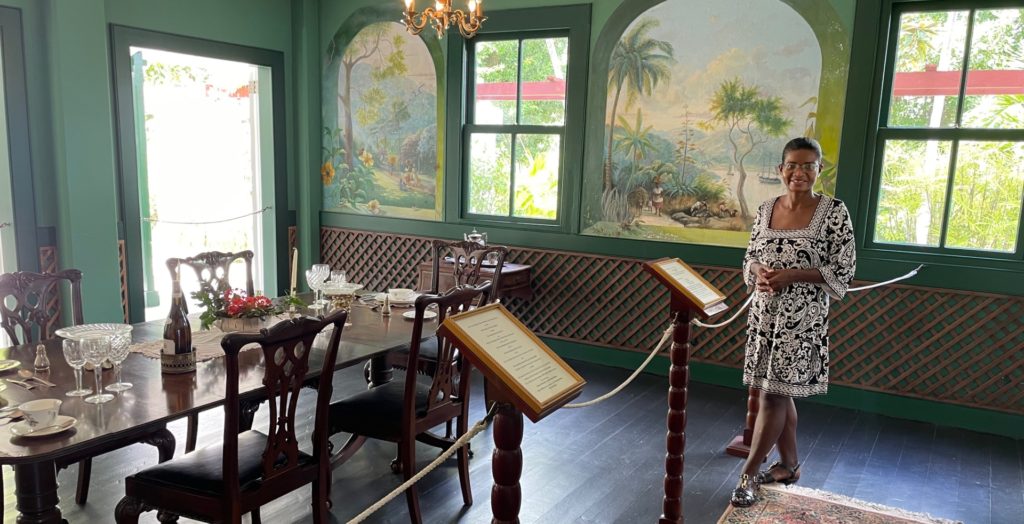
Glass cases in other rooms hold interesting memorabilia of past governors, including a guest book with the signature of Queen Elizabeth II in 1977, on her second trip to the BVI with Prince Philip. A framed list of Monarch’s representatives graces the wall and a glass case features the official white plumed helmet and tunic at one time worn by governors while inspecting the Royal Virgin Islands Police force.
Of special interest is the beautiful rich, green-walled dining room with its long mahogany dinner table and arched fresco paintings of island life. These were completed during then, Governor Barwick’s appointment from 1982-1986, by his wife Margaret, assisted by local artists. Be sure to go outside to the patio and check out the lovely, terraced garden, also a gift of her artistic flair and agricultural handiwork with plants, shrubs and flowers.
Time for a bright seaside drive west along the coastal road to just the perfect spot for a leisurely mid-afternoon lunch at the Sugar Mill Restaurant in Apple Bay. Here keeping within the “history- buff theme,” is an exclusive small inn and restaurant built around the remains of a traditional plantation sugar mill. Go inside the cavernous step-down restaurant to admire the old stone walls.
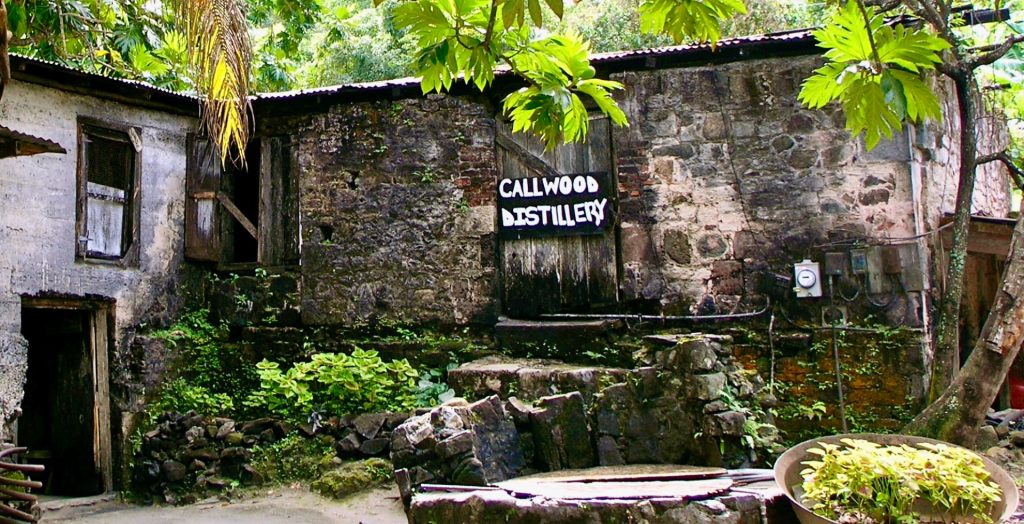
Another stop on Tortola’s history trail: It’s getting close to happy hour now and what better place to join seaside cocktail crowd then at the popular Cane Garden Bay, dotted with reggae music-playing bars and cool drinks waiting. Head down to the end of the bay and just across the road to continue your historical tour at none other than the Callwood Rum Distillery, one of the oldest pot distilleries still in active use.
History has it that in the late 1800s, a buccaneer by the name of Richard Callwood bought the Arundel Estate in Cane Garden Bay. Within that estate was a pot distillery for rum. The booming days for rum production in the territory was the 18th to early 19th centuries, and at its height there were 26 distilleries on Tortola alone. Today, the Callwood Rum Distillery is the only one still in operation and run by fourth generation Callwoods.
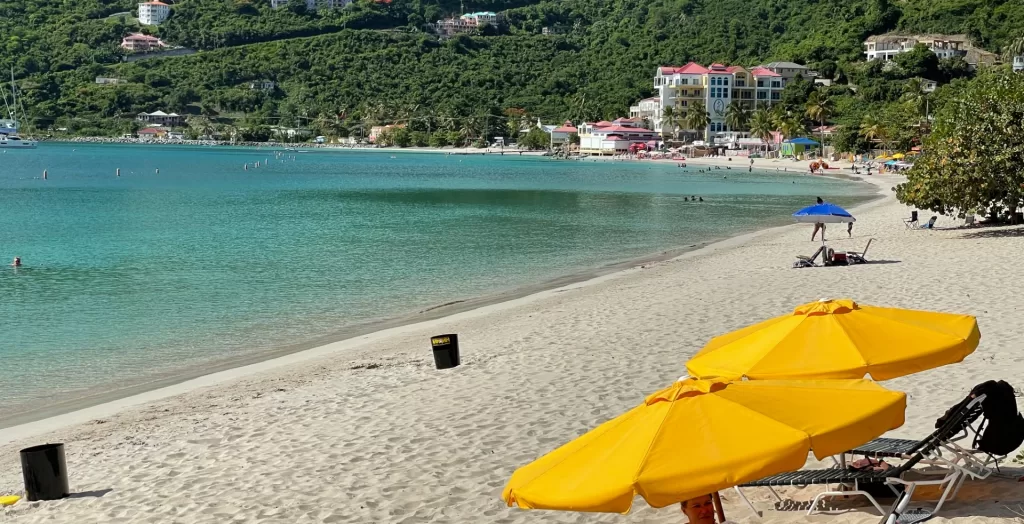
Take a tour through this small fascinating operation, to see the rum in oak barrels along with the copper pots. The distillery produces about 25 gallons a day using the pure cane juice locally sourced from the sugarcane harvested from land just behind the distillery building. Here semi-encased in a rock wall enclosure is the charcoal-powered boiler, steaming while infusing the air with the sweet aroma of rum. It is then bottled, labeled and ready for distribution.
Rum bottles line the walls ranging from a light white rum to a 10 year-aged brown rum. A popular rum that is often out of stock is named “The Panty Dropper” and you might want to ask the alcoholic content of this one.
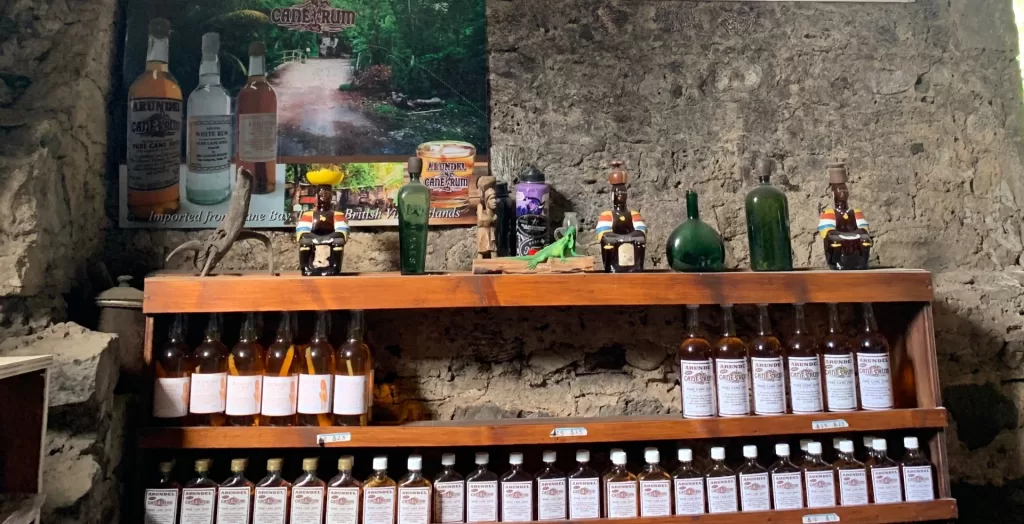
After a few selected tastings and a bottle to take home, head across to the beach for a kick-back, barefoot sunset and a chance to reflect on the inlands rich and multi-layered cultural history. Hopefully, in just a day fun trip, you gained a deeper appreciation for the islands’ historical roots.
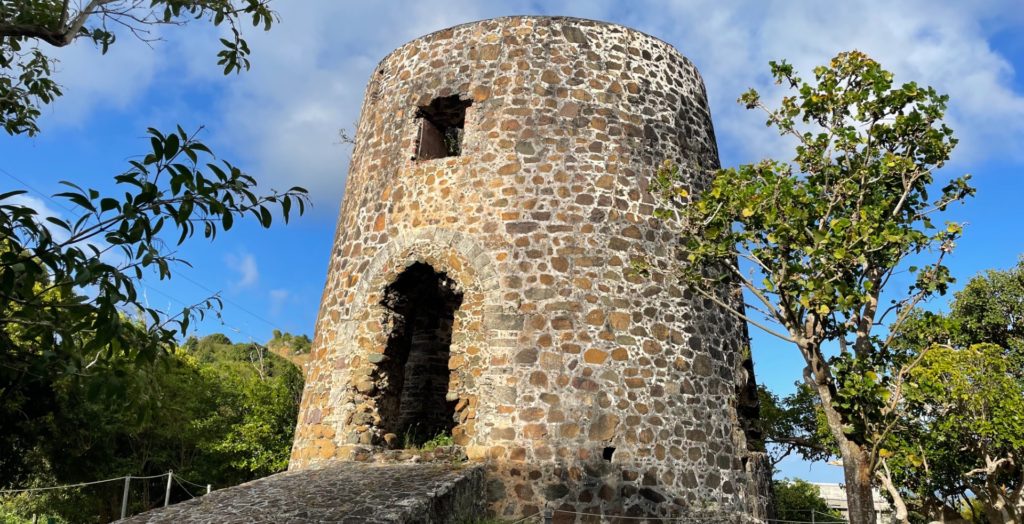
Editor’s Note: Mount Healthy Windmill National Park. You may want to save this BVI historical site for another day, but it is certainly worth a visit. The Mount Healthy Windmill, located above Brewer’s Bay, is a tall cylindrical structure made of stone, and is Tortola’s only historic national park. Built in the 18th century, it was the sole wind powered mill in the British Virgin Islands. Other mills were animal powered. Signage provides an insight into the mill’s background. Sit beneath a shade tree on one of the park’s benches and contemplate life in the Virgin Islands when sugar cane was the island’s main crop and rum production was its primary industry. After soaking up the Windmill’s plantation-era vibes, venture down to Brewer’s Bay for a swim and a snorkel.
Additional information on Tortola’s historical sites can be found at:
More information on these historical sites can be found at:






